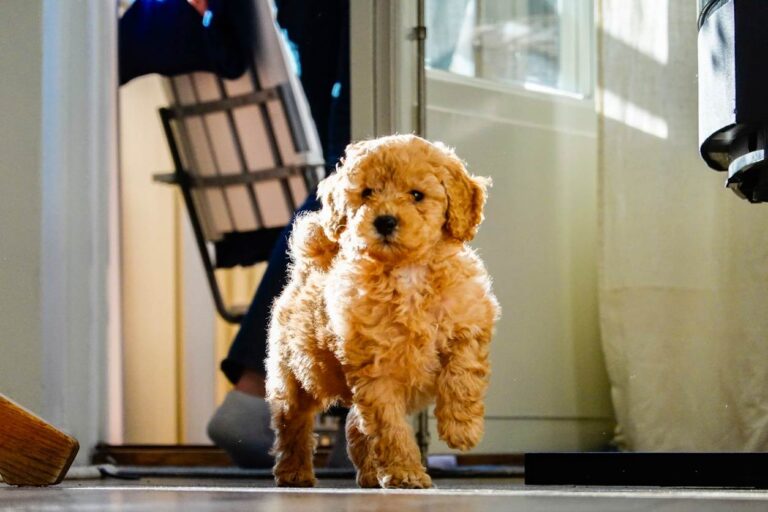Puppies love to playbite and dig those needle-sharp teeth into your arms, legs, and shoes, especially while you’re walking. Sometimes the bites start transferring outside your house, too, making it seem like you suffer battle wounds every time you take your puppy on a walk. If this is happening to you, it is time to teach your puppy loose, leash walking. Below is a step-by-step guide on how to teach your puppy to walk next to you instead of biting you!
Puppy Leash Walking Supplies:
How to Get Your Puppy To Stop Biting You and the Leash on Walks
Step 1: Proper Leash-Walking Position
Fit your easy-walk harness, with the D-ring on your puppy’s chest. Clip the harness and collar together with your leash. This will keep your puppy from getting out of the harness and keep the harness from sagging. Put your treat pouch on and have it filled with kibble. If your dog will not eat kibble, use small training treats instead.
Put the loop of the leash through your right hand and pick up the slack on the leash with your left. Your puppy should start right beside you with their nose not crossing the front of your pants as you walk. There should be enough slack in the leash that they feel no pressure, but if the puppy moves in front of you, then you’ll feel tension on the leash.

Step 2: Start Walking
Tell your puppy “let’s go,” and immediately feed a piece of kibble. Make sure you are treating the puppy in the proper walking position and not forcing them out of position to reach the treat. Feed a piece of kibble for each step for the first 10 steps. Tip: Keep multiple pieces of kibble in your hand but feed the puppy one at a time. Continue to feed your puppy at a high rate, maybe every 2-3 steps at this point.
If your puppy pulls in front of your leg at any point, immediately pull them back firmly while saying “uhuhuh.” They should end up slightly behind your leg after the correction. Move ahead when there is once again slack on the leash, continuing to treat at a high rate, as needed, scaling back on the food as the puppy is getting the hang of it. You may have to feed at a higher rate whenever you first leave your home and anytime there is a distraction, and then slow the rate of feeding in low-distraction settings.
When you want to stop and let your puppy potty or sniff in the grass, say “free” and immediately give them the full length of the leash. When you are ready to start walking again, say “let’s go,” and start walking even if your puppy doesn’t.

Step 3: Decrease the Rate of Reinforcement
You will likely need to feed at a high rate for the first three days or more. It is important that you show your puppy what you are looking for with positive reinforcement, rather than focusing on corrections. As your puppy is walking more and more in the proper position, though, you should feed less and less, ultimately saving treats only for the hardest moments (e.g. a distracting squirrel, another dog, etc.).
By focusing on leash walking, you eliminate your puppy having free reign to bite your ankles and the leash. Eventually, that habit will fade altogether and you will have a well-mannered dog to take on walks. If your puppy is play-biting more in the home than outside, check out our blog post on how to stop puppy biting and chewing. If you are still having trouble with your puppy biting you and the leash on walks after implementing these steps, we are here to help! Contact one of our behavior consultants and we’ll get your puppy leash walking like a pro in no time.
*This page contains affiliate links. If you choose to purchase after clicking a link, we may receive a commission at no extra cost to you.*




